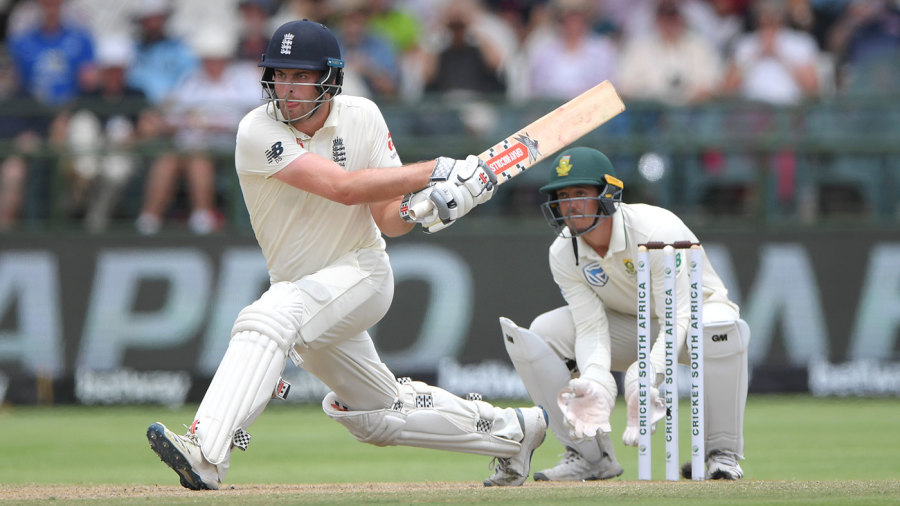 The Barmy Army in full voice © Getty Images
The Barmy Army in full voice © Getty Images
This five-day Test cricket thing is pretty good
This match provided an eloquent response to those suggesting that Test cricket should last only four days. Absorbing until deep into the final session of the fifth-day, it attracted large crowds and included fine displays of steadfast and aggressive batting, spells of intimidating fast and skilful seam bowling, intriguing spells of spin and, most of all, the wonderful ebb and flow that makes this game so special. It was, in short, an excellent advert for the game and strong evidence that it doesn’t require too much tinkering. Administrators meddle with it at their peril.
Winning overseas is tough
Going into this match, England had not won an away Test in a live series (one that was not already decided) against any team other than Sri Lanka or Bangladesh since they were last in South Africa four years ago. And while they may have fancied their chances when declaring shortly after lunch on day four, South Africa kept them in the field for 137.4 overs before victory was finally achieved. By then, there were only 50 deliveries left in the match.
England bowled well throughout South Africa’s second innings but, on a surface that had slowed considerably, they lacked the weapons – in particular, perhaps, an attacking spinner – which might have coaxed anything out of the pitch or the Kookaburra ball. As a result, they had to toil relentlessly hard to work their way through the South Africa batting. It was England’s first Test victory in Cape Town since 1957.
There’s only one Jimmy Anderson
Anderson gave everything he had in this game. Even after it became clear, just before tea on the final day, that he was struggling with a side strain, he was the man his captain called upon to bowl after tea. With pain etched on his face between deliveries, he only managed two overs and may well have worsened the injury. But it was typical of him to try and telling that, even aged 37, he was the first choice in such circumstances.
 James Anderson receives the plaudits for a wicket © Getty Images
James Anderson receives the plaudits for a wicket © Getty Images
It seems odd to report now but, ahead of this game, there were suggestions that Anderson might be left out. As it transpired, however, Jofra Archer was ruled out through injury and England were not forced into any such decision. But he responded with an immaculate performance. Despite rarely gaining much swing – his outswinger simply refused to move in the second innings – he maintained pressure in every spell and, in the first innings, became the oldest England seamer to take a Test five-for since Freddie Brown in 1951. It is true that several of those wickets included lower-order batsmen but England have been frustrated by such batsmen often in recent times and, on a surface that negated bowlers as skilled Kagiso Rabada and Vernon Philander, Anderson finished with outstanding match figures of seven wickets for 63 runs from 37 overs. England now face an anxious wait to learn the severity of the problem. And, perhaps, whether Anderson can stand the thought of another stint of rehab.
Stats don’t tell the whole story
A regular refrain from some on social media is: ‘Ben Stokes isn’t that good; his stats are ordinary.’ Whether that point about his stats is true – a batting average of 36 and bowling average of 33 are really quite impressive – the fact is you cannot judge Stokes purely in those terms. In this game, he provided a record five catches in the first innings, an outstanding innings which helped England accelerate towards a declaration in their second innings – a more selfish player might have not have been prepared to risk his own wicket in such fashion – and a display of pace bowling that underlined, once more, his strength and fitness.
 Ben Stokes celebrates dismissing Vernon Philander to seal England’s victory © AFP / Getty Images
Ben Stokes celebrates dismissing Vernon Philander to seal England’s victory © AFP / Getty Images
While the wickets didn’t come until late, he troubled all the batsmen with his pace and hostility and perhaps created wickets at the other end with the pressure he built. It was fitting that it was Stokes, when England had tried all other options, who tore in for one final spell and claimed the final three wickets. He was, quite rightly, Player of the Match.
The Vicar takes residence
The manner in which Dom Sibley (the vicar of Sibely, geddit?) batted throughout the second innings suggested England had found an opening partner for Rory Burns. In resisting for nearly 500 minutes, he saw the shine of the ball, wore down the bowlers and eased the role of his middle-order colleagues. This is exactly the requirement an England side rather heavier on aggressors than defenders have had for several years.
 Dom Sibley reverse-sweeps © AFP
Dom Sibley reverse-sweeps © AFP
Bess can perform a holding role
Dom Bess out-bowled South Africa’s Keshav Maharaj in this Test. The 22-year-old Bess, called into the squad as injury cover and without a match since September, performed admirably in conceding just 2.29 runs per over (from 27 overs) in South Africa’s first innings and thereby allowing England’s seamers to remain fresh and operate in rotation at the other end. While, in a perfect world, he might have proved more potent in the fourth innings, we probably have to be realistic. This was his third Test and only his 39th first-class game. England couldn’t reasonably have asked for more from him. Fitness permitting, he looks certain to be included in the squad to play in Sri Lanka in March.
 Dom Bess claimed the crucial scalp of Faf du Plessis © AFP
Dom Bess claimed the crucial scalp of Faf du Plessis © AFP
The Barmy Army are an asset to cricket – and England, in particular
The sad truth is that, in some nations and at some grounds, this wonderful final day may have been witnessed by a handful of spectators. Here, however, the spectacle was witnessed by several thousand thoroughly engaged supporters. Not all were supporting England, of course, but many were and the noise they made and the atmosphere they generated contributed to a wonderfully memorable day. On a more practical level, the fact that England have attracted so many supporters to follow them – some estimates suggest there are 10,000 England supporters in Cape Town – with the economic benefits it brings to the cities they visit helps keep the longest format viable. They probably deserve a bit more respect than they are sometimes given.
George Dobell is a senior correspondent at ESPNcricinfo
© ESPN Sports Media Ltd.
Source: ESPN Crickinfo
